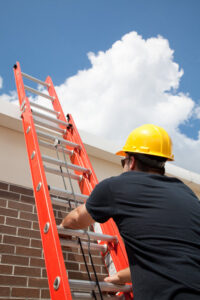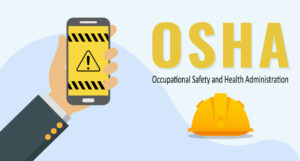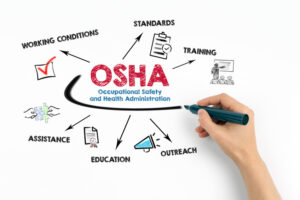“we firmly believe in the power of hands-on training. Our fall protection courses feature practical exercises and simulations that allow participants to apply their theoretical knowledge in real-life scenarios.”
Continue readingThe Importance of Regular Site Safety Inspections in Preventing Accidents
Does OSHA 30 Training Require Any Special Prerequisites?
OSHA stands for Occupational Safety and Health Administration and it is in charge with providing companies and individuals with safety training, thus preventing many unpleasant and often dangerous situations which can put people’s lives at great risk. We could speak of two different types of safety courses available during the OSHA 30 format, namely the one in construction and the other one in general industry.
The course in the construction industry can be applied to building, renovating, demolition, painting of a structure, and so on. General industry can refer to mostly any other type of fields, including food industry, hospitality industry, manufacturing, service and maintenance, etc. These courses usually also provide trainees with relevant information about how the OSHA training functions.
At any rate, there are no specific prerequisites required to be able to take the OSHA 30 training. There are two different ways in which you can take the OSHA 30 training. First, you can have an OSHA trainer come to your specific site and provide the needed training for your employees, or you can take the training online. Regardless of your exact choice, you basically get the exact same OSHA card to attest that you have successfully taken the required course.
Why Safety Training Has to Be Customized When Considering Different Work Sites
Regardless of the exact type of work site, safety training should definitely be a top priority. Where safety procedures and rules are applied, there are fewer chances of accidents. In this respect, management staff should be able to connect and involve all the employees of a company in order to attain high safety standards and improve the productivity level of the workers.
Safety paperwork should be available at all times, in order to provide the necessary information, i.e. to educate the staff of a company, as well as to improve the already existing safety levels. At the same time, employees who notice any kind of safety issues should report it to their supervisors, who need to take measures. Because work sites certainly differ from each other, customizing safety for each one of them is important.
And in order to know how to customize safety training, high quality training from safety consultants becomes mandatory. Moreover, it is very important to make safety training industry-specific. Because investing in safety training is a clear sign that you value your company’s personnel, this can be very motivating and can help employers attract and retain talents, which is essential for the development and stability of any business.
Tips about Construction Safety from Health and Safety Consultants
 There are many safety hazards which can be encountered on construction sites. With the help of safety management, you can avoid many dangers which may otherwise result in severe injuries. Moreover, with the help of good health and safety consultants, you can make sure that you protect the good health and state of your employees, while also complying with national and regional safety training legislation.
There are many safety hazards which can be encountered on construction sites. With the help of safety management, you can avoid many dangers which may otherwise result in severe injuries. Moreover, with the help of good health and safety consultants, you can make sure that you protect the good health and state of your employees, while also complying with national and regional safety training legislation.
Safety consultants can help companies identify potential hazards and also get all the necessary data regarding the measures which should be taken in order to improve the safety of a certain working environment.
According to health and safety consultants, you should take certain steps to ensure that you are safe from construction site hazards. Thus, you should initiate regular checks for the tools and equipments. Also, potential risks at the construction site should be identified and clearly stated. At the same time, employee safety protocols should be elaborated and implemented at all times.
Communicating safety issues to your employees should be done in such a way that there is no room for misinterpretations or ambiguous meanings. Strategies should be created in perfect accord with job requirements. And the power of example plays an enormous part in the effort of implementing safety measures.
Why Are There Two Different Types of OSHA Training Courses?
Many workplaces require OSHA safety training, as it can create a safe environment and, in many cases, it can even save lives. It is the employers’ legal duty to provide their employees with a safe place to work in. There are two basic types of OSHA training courses, namely OSHA 10 and OSHA 30, because they are meant for different professionals, or, more specifically, different levels in one’s career path.
OSHA training is a voluntary program. Nevertheless, certain companies, local jurisdictions or trade unions can make it mandatory for professionals to go through this type of training. The OSHA 10 refers to 10 hours of training, whereas the 30 version of the course refers to 30 hours of training. Moreover, OSHA safety training can refer to construction training or general industry training.
Construction industry refers to any type of construction work, including painting and redecorating, replacements or repairs. General industry refers to mostly any kind of industry which does not pertain to the construction field. So it may include areas like health, manufacturing, warehousing, retail and product distribution.
For many entry-level workers the 10 hours’ training should be enough. But for supervisors, site leads and employers which will have certain responsibilities, the 30 hours OSHA safety training is required.
The Benefits of Practical Training vs. Classroom Training for Workplace Safety
Workplace safety plays an essential part in ensuring the well-being of a company’s employees and their productivity also. Apparently, in case the content for the practical training is the same as the one for the classroom training, these two types of training are very powerful tools from the point of view of their efficiency.
The exact type of training you will go through will actually depend on your specific needs, as well as on the topics you are choosing. It is the quality of the training which is most important, regardless of the method by which the message is delivered. Thus, the learning objectives have to be clearly defined. The content should be based on the established learning objectives. Moreover, students must learn how to apply the acquired knowledge in real life and imagined scenarios.
Online trainings are very convenient from the point of view of the amount of money which can be thus saved. Online training should provide students with enough interactions in order for it to have the required efficiency. At the same time, online training can allow students to apply knowledge during the learning process per se. On the other hand, classroom safety consultant services can offer more in terms of team building or problem-solving.
Do Temporary Construction Employees Need Extensive Safety Training?
When paired with low unemployment levels, high demand can cause shortage in personnel. And because of that the solution is often that of employing temporary workers. And due to this fact, safety issues may arise.
It is the hiring company’s responsibility to familiarize even its temporary workers with safety protocols, requirements and guidelines. As a matter of fact, companies should train temp employees the same way as they do with their permanent employees. This type of training should also include appropriate equipment, fall protection elements, as well as avoiding perilous interaction with mobile machineries.
The fact is temporary construction employees are often rushed into certain positions without really getting to know their co-workers and this may lead to lack of communication, which often results in safety-related problems. Safety training instruction has to become an ongoing habit.
It may often be the case that the staffing agencies are responsible for ensuring the communication between employers and temp workers, and be willing to get familiar with the hiring company’s safety conditions and compliance. All employees should have access to safety training and PPE, no matter if they are hired on a temporary or on a permanent basis.
In conclusion, both the primary and the host employers are responsible for ensuring safety conditions for temp workers.
What Training Do You Need to Become an Expert in Charge of Crane Inspection?
Experts in charge of crane inspections are the ones who inspect the cranes according to their knowledge and experience, as well as depending on the actual legislation which should be applied to the exact type of crane.
According to OSHA requirements, crane inspectors need to be competent and qualified through a Colorado crane school. In this respect, it is very important to clearly understand these specific terms. Thus, a competent person is one who can identify certain hazards and also is capable of avoiding them or taking the necessary measures in due time. A qualified inspector usually has a certain degree, knowledge, training and experience in order to deliver good quality services and can prove the ability to solve issues which are related to a certain project, subject or work.
There are certain parts of a crane which may need attention, such as the drums, the sheaves and the structure in general. The hydraulic components and the electrical parts may also require special inspection, as well as the pumps and the valves.
The training should offer not merely classroom preparation, but also hands-on type of training. Related education may also help a lot, and can include courses in engineering, applied mathematics, physics, construction technology, etc.
Is OSHA Training Needed for Most Stores and Retail Outlets?
The safety of your employees should be on top of your priorities’ list. Managers should be able to define standards in a clear-cut manner and to apply those standards on a regular basis to their business.
These days, OSHA training is required for many stores and retail outlets as well. By using OSHA standards, you can make sure you are in compliance with local and regional requirements and that you actually provide a safe workplace for everyone in your company to enjoy.
OSHA training is aimed at several different categories of employees, including management staff, cashiers, clerks, safety department members, new employees, and everyone which may need this type of certification.
Among other things, employees learn how to use the specifically-required safety equipment and when exactly they should use it. Employees should learn how to protect the workplace and the workforce by reducing and even eliminating hazards before using such equipment.
Among other things, retail outlets and stores should keep all exit routes free of flammable substances. Moreover, exit areas should be properly lit and marked. There should be an alarm system for warning employees in case of fire.
OSHA training from https://www.triventsc.com/our-courses/osha-10-construction/ is particularly recommended for those who work in construction and a noisy environment or have to deal with hazardous substances.








